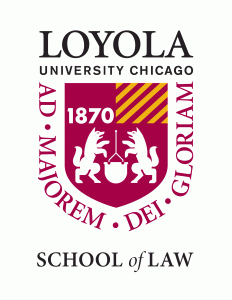Worldwide, 2020 has been different for plenty of reasons. With the cancellations of all normalcy, it is fair to assume that effects of COVID-19 on young people around the world will take years to understand, and even longer to move past. When schools went remote in the Spring, it only made sense for standardized testing to change and adjust for the times we were living in.
As students completed the fall semester, educators asked: What is the appropriate method for gauging student’s understanding? Studies show that the testing system we had did more harm than good. On the other end of this pandemic, the psychological trouble students will have may be exacerbated by the need to take a test which determines how much they have learned.
The question we should really be asking is: Is testing students showing us what it is we need to fix? Most educators would say: No! The time before exams is spent vastly different among schools and students in different area codes. The passage of the No Child Left Behind Act in 2008, and its update through the Every Student Succeeds Act in 2015, created environments where every student from third through eighth grade takes exams to show how well state standards are being met.

Photo by Avel Chuklanov on Unsplash
Districts in lower income neighborhoods spend time prepping students for a testing environment and instructing them on the best methods to approach the exams, instead of spending time focusing on the actual standards that will be found on the exam. These exams have also been used to keep minority students out of classes with more challenging content and within the confines of low-level remedial courses.
Equity Disparities in Standardized Testing
Equity disparities appear in the method of standardized testing within multiple avenues. The expectations and emphasis placed on these students creates a stress and anxiety which contributes to poor test performance. The questions themselves are often created with bias toward those of different races, cultures, and socio-economic backgrounds. The designers of these exams rely on questions and ideas that assume background knowledge more often held by middle-class white students. The exam itself depends on this type of question in order to create a wide range of scores and create a disparity amongst the students.
This is not shocking, as most studies have shown that standardized tests should not be used to evaluate the quality of education. The reality is that standardized tests are sold by large corporations, which are attempting to gain revenue from their shareholders. It is difficult to assume that these individuals are creating neutral exams that will have a holistic approach to the issues and needs of students. Furthermore, in the time of COVID-19, where communities of color are contracting the virus at higher rates and are experiencing worse health outcomes, the gaps between affected students and their peers are guaranteed to grow. Using this time of uncertainty to contribute to the issues in the education system seems not only tone-deaf but also cruel.
Alternative Approaches to Assess Student Knowledge
As students begin to return to school, FutureEd out of Georgetown University created a Blueprint for Testing, which helps explain approaches schools can take in order to assess students during the pandemic and during their return. In the study, the point is made that assessment is important and may matter more than ever due to the uncertain instruction of virtual learning. Though assessment is necessary, testing itself may not be the solution. One suggestion made throughout the study states that if educators cannot identify clear, constructive actions to take based on assessment results, standardized testing should not be occurring. Instead, school sites should prioritize assessments closest to the method of instruction that students are experiencing. This creates a clear appraisal of where students stand and how they can be assisted.
After the immediate effects of COVID-19 pass, it would be in the education’s system best interest to attempt to develop alternatives to standardized testing. Some alternatives are those of sampling or multiple measures of assessment. The closest to the system currently in place is that of sampling, where standardized tests still occur, but every year a sampling of students is tested. The alternative of multiple measures allows for a creation of various streams of analysis on the issue and in turn creates a better indicator of success linked to grades, retention, and employment.
The reality is that students will be in a different space when they return to school sites, and the education system should likely reform their methods of analysis to ensure that the system they are implementing produces the best results for all students involved.
Lilia Valdez is a student at Loyola University Chicago School of Law and wrote this blog post as part of the Education Law Practicum.

